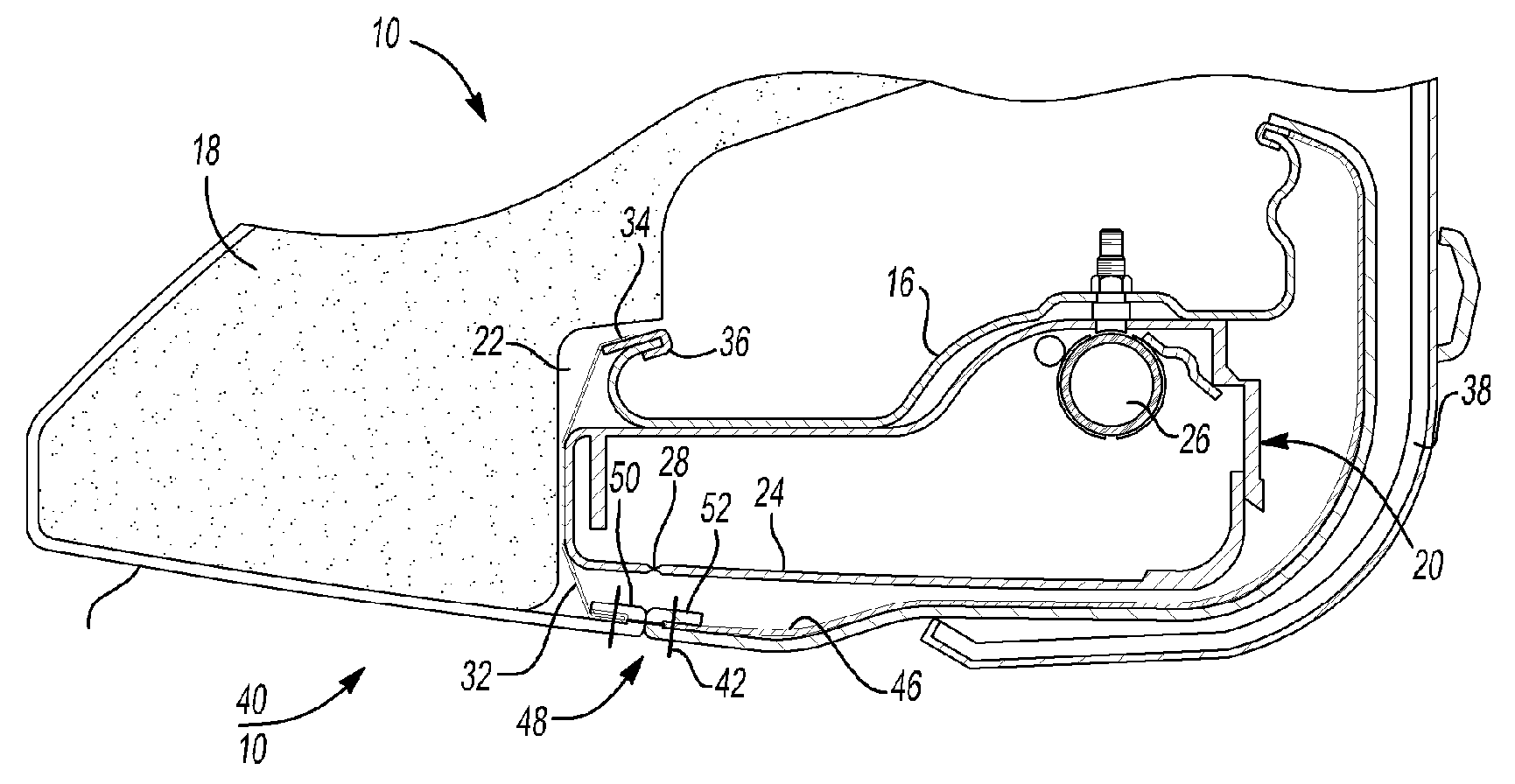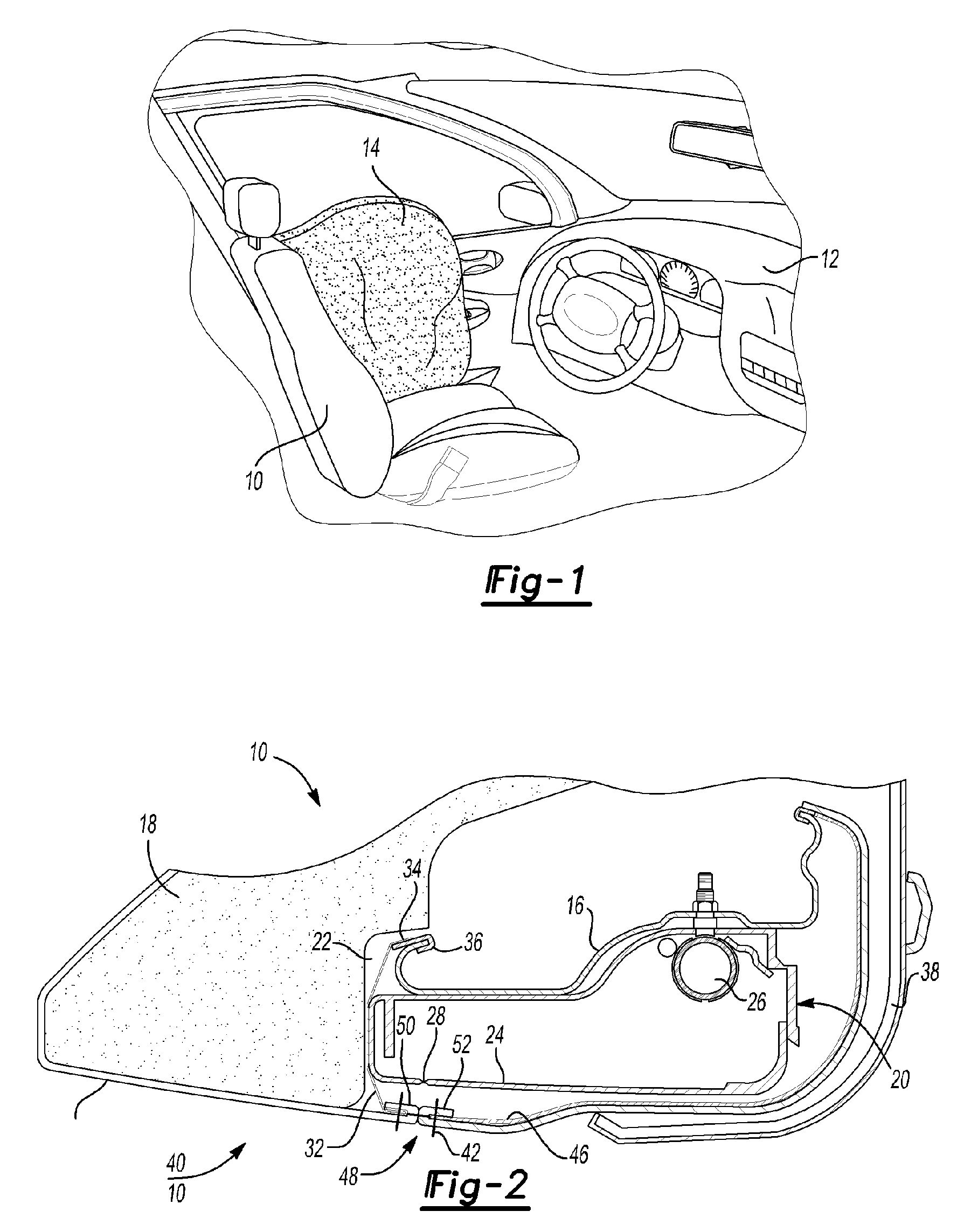Vehicle seat side air bag system
a technology for side air bags and seat covers, which is applied in the direction of vehicular safety arrangements, pedestrian/occupant safety arrangements, vehicle components, etc., can solve the problems of air bag deployment, air bag deployment location variation, and air bag elasticity of covering materials and urethane foam padding, so as to resist elastic deformation of the trim cover
- Summary
- Abstract
- Description
- Claims
- Application Information
AI Technical Summary
Benefits of technology
Problems solved by technology
Method used
Image
Examples
Embodiment Construction
)
[0019] Referring now to FIG. 1, a seat 10 for vehicle 12 is shown with a side air bag 14 during deployment. The side air bag 14 is deployed in the event of a side impact to the vehicle 12. The side air bag 14 is deployed between the seat 10 and adjacent side of the vehicle 12 which is in most instances a vehicle door.
[0020] Referring to FIGS. 2 and 3, a portion of seat 10 is shown to include a frame 16 to which foam padding material comprising a foam pad 18 is secured. An air bag module 20 is received in a pocket 22 formed by the frame 16 and pad 18. The air bag module 20 has a housing 24 in which an inflator 26 is disposed. A folded air bag 14 is normally retained within the housing 24 that is inflated by the inflator 26. The housing 24 has a split line 28 and may be formed as a groove or perforation in the housing 24 that creates a stress riser in the housing so that the housing splits predictably at the split line 28.
[0021] A reinforcement panel 32 is secured at an anchoring e...
PUM
 Login to View More
Login to View More Abstract
Description
Claims
Application Information
 Login to View More
Login to View More - R&D
- Intellectual Property
- Life Sciences
- Materials
- Tech Scout
- Unparalleled Data Quality
- Higher Quality Content
- 60% Fewer Hallucinations
Browse by: Latest US Patents, China's latest patents, Technical Efficacy Thesaurus, Application Domain, Technology Topic, Popular Technical Reports.
© 2025 PatSnap. All rights reserved.Legal|Privacy policy|Modern Slavery Act Transparency Statement|Sitemap|About US| Contact US: help@patsnap.com



